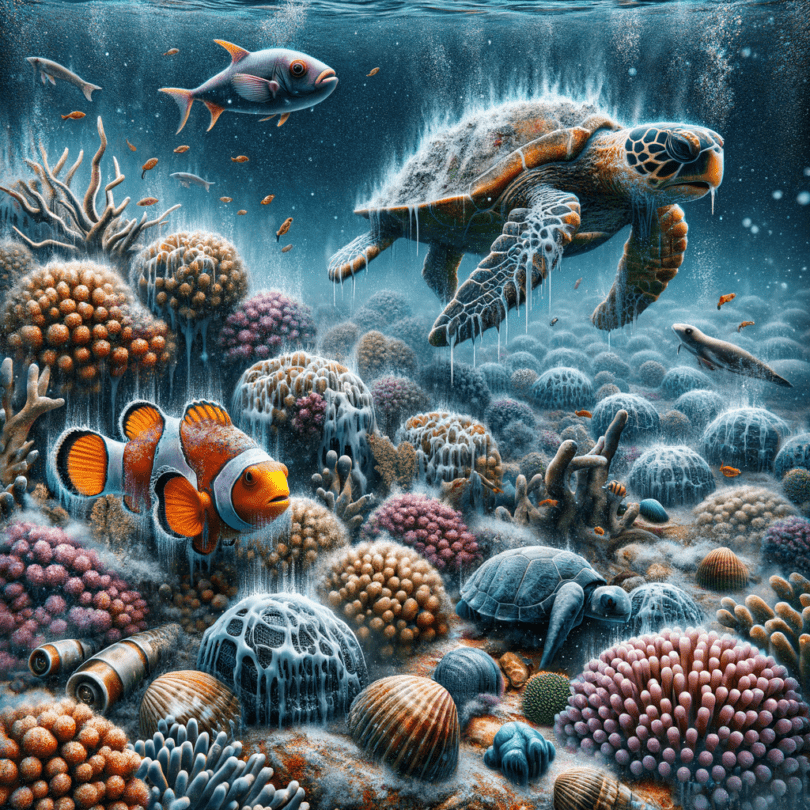From where I’m sitting right now, gazing out at the Atlantic stretching endlessly before me, I feel this sense of peace that only the sea can bring. The sun’s setting, and the sky’s like a painter’s canvas splashed with fiery oranges and soft purples. Quite a sight, right? The gentle hum of waves stroking the shore and the seagulls singing overhead—it all seems so serene. But lurking beneath this postcard-perfect view is a sneaky villain that’s been slowly but surely altering the underwater landscape—ocean acidification.
Just imagine this for a second: it’s like dumping a can of soda into the ocean. It sounds a bit much, I know, but stick with me. Ocean acidification is like that soda moment; it’s about increasing acidity. This whole scene is playing out because our mighty oceans have been soaking up loads of carbon dioxide (CO2) from the air. And here’s the big twist: over a quarter of all CO2 emissions wind up in the ocean! That’s a breathtaking number when you think about how much carbon dioxide we’re churning out every single day.
Now, why should you care? What’s the big fuss over a bit more CO2 in the old ocean? Picture this: the ocean is like Earth’s heartbeat, its steady rhythm. It’s the heart of the ecosystem, home to everything from itty-bitty plankton to those gigantic blue whales. This delicate dance of marine life is now facing a tough opponent in acidification, and that’s a truth that sits heavily.
Let’s get personal for a sec. Ever gone snorkeling through a pristine coral reef, maybe on vacation with your loved ones? I have, and let me tell you, it’s like stepping into a whole new world. The lively colors of coral, the curious fish darting about—it’s a memory I cling to. But here’s the kicker, these stunning reefs are in danger. Ocean acidification is like a wrecking ball, making it tough for corals to build their skeletons, leaving them fragile.
Coral reefs are more than just pretty sights; they’re the buzzing cities of the sea. They support about a quarter of all marine life. They’re like the ocean’s nursery, offering shelter, food, and breeding spots. But with the acid levels rising, corals are struggling. It’s like trying to build a house where the bricks keep crumbling—not much of a foundation to stand on.
And let’s not forget about our shelled buddies like clams and oysters, and the tiny powerhouses, pteropods, or sea butterflies. These little guys are the unsung champions of the food web and nourish bigger sea creatures like salmon and whales. Acidification is the villain messing up their shell-making, like sending someone to war with paper-thin armor. Yikes, right?
And it’s not just about sea life—there’s a very real human side too. Imagine coastal communities whose livelihoods hang on fishing and aquaculture. Picture the economic chaos if these folks suddenly lost their main income source. Think about the waves that’d send crashing through the global economy. Hard-working business folks could see their blood, sweat, and tears face unforeseen danger, and families might watch their way of life fade.
For someone like me who practically drools at the thought of seafood—and yeah, I might have grabbed that extra helping of shrimp scampi—this is scary. It threatens to make some of our fave seafood rarer and pricier. But it’s deeper than what’s on the plate; it’s about cultural ties to the sea, ties woven for generations. Losing that isn’t just losing food—it’s losing part of our heritage.
I’m not trying to be Chicken Little here, screaming that the ocean sky is tumbling down, but the ripple effects are real. A shake-up in marine ecosystems can lead to dwindling fish numbers, affecting food security and the balance of marine life.
But hey, within these concerns are seeds of hope—hope for action. There’s a chance here for the world to pull together, teaming up to take on ocean acidification. Slashing carbon emissions is non-negotiable; we need those like fish need water. Enter carbon capture technologies—these innovations are the MVPs we need. And giving a nod to restorative aquaculture and sustainable fishing practices—these are small but vital moves in this battle.
You know, I always find comfort in age-old wisdom. Like that Chinese proverb: “The best time to plant a tree was 20 years ago. The second-best time is now.” We can’t reverse time, but we sure can steer the course ahead. Raising awareness about the ocean’s plight and translating that into policies and personal choices is vital. It’s about shrinking our carbon footprints, and hey, it’s easier than you’d think.
Simple stuff goes a long way—opting to walk or bike for short jaunts, choosing local goodies, recycling like a pro, and championing clean energy. Each small step, when added together, becomes a mighty force.
Sitting here by the ocean, I’m reminded how tied we all are to this world, part of something way bigger than just us individuals. It’s a shared journey—oceans, lands, cities, all linked together. And nestled in this grand picture is a reality we can’t ignore: what we do to the ocean, we ultimately do to ourselves.
As I watch the sun sink beneath the waves, painting the horizon with its last fiery hues, I promise to remember and act. If you’re with me, I’d love for you to join—not out of fear, but out of pure love for this stunning, mysterious force we call the sea. ‘Cause even though the tide’s turning, we hold the power to steer it toward a brighter tomorrow. This responsibility lies not just in safeguarding ocean life but in preserving the lively spirit within us all. Let’s honor this planet we call home.

